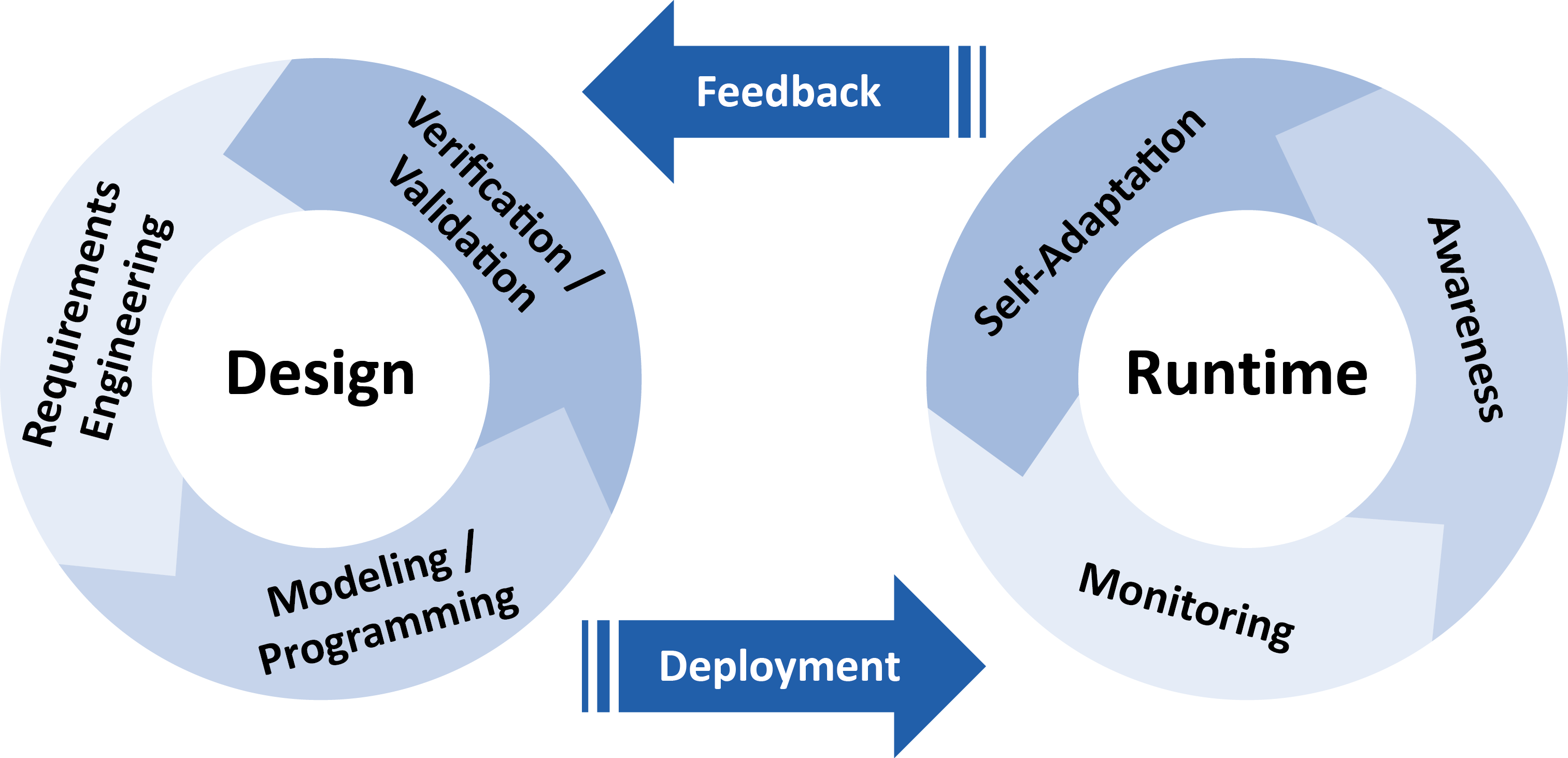Feedback Loops in the Development of Autonomic Systems
The development of autonomous systems goes beyond addressing the classical phases of the software development life cycle like requirements elicitation, implementation and deployment. Engineering autonomic systems has also to tackle aspects such as self-* properties like self-awareness and self-adaptation. Such properties have to be considered from the beginning of the development process, i.e. during elicitation of the requirements. We need to capture how the system should be adapted and how the system or environment should be observed in order to make adaptation possible.
Models are usually built on top of the elicited requirements, mainly following an iterative process, in which also validation and verification in early phases of the development are highly recommended, in order to mitigate the impact of design errors. A relevant issue is then the use of modeling and implementation techniques for adaptive and awareness features. Our aim is to focus on these distinguishing characteristics of autonomic systems along the whole development cycle.
We propose a “double-wheel” life cycle for autonomic systems to sketch the main aspects of the engineering process. The “first wheel” represents the design or offline phases and the second one represents the run-time or online phases.

Both wheels are connected by the transitions deployment and feedback. The offline phases comprise requirements engineering, modeling and programming and verification and validation. We emphasize the relevance of mathematical approaches to validate and verify the properties of the autonomic system and enable the prediction of the behavior of such complex systems. This closes the cycle providing feedback for checking the requirements identified so far or improving the model or code. The online phases comprise monitoring, awareness and self-adaptation. They consist of observing the system and the environment, reasoning on such observations and using the results of the analysis for adapting the system and providing feedback for offline activities. Transitions between online and offline activities can be performed as often as needed throughout the system’s evolution, and data acquired during monitoring at runtime are fed back to the design cycle to provide information to be used for system redesign, verification and redeployment.
The process defined by this life cycle can be refined providing details on the involved stakeholders, the actions they perform as well as needed input and the output they produce. A process modeling languages can be used to specify the details. We can use therefore general workflow-oriented modeling languages such as UML activity diagrams2 or BPMN, or Domain Specific Languages (DSL) such as the OMG standard Software and Systems Process Engineering Metamodel (SPEM).
Within the ASCENS project several languages, methods and tools have been developed or previously existing ones have been extended to address engineering of ensembles. The development of a particular autonomic system will imply the selection of the most appropriate languages, methods and tools, i.e. an instantiation of the life cycle.